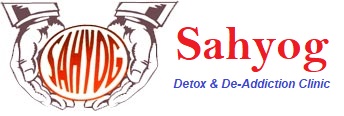Diverse Explanations on Addiction
- Several explanations (or “models”) have been presented to explain addiction:
- The moral model states that addictions are the result of human weakness, and are defects of character. Those who advance this model do not accept that there is any biological basis for addiction. They often have scant sympathy for people with serious addictions, believing either that a person with greater moral strength could have the force of will to break an addiction, or that the addict demonstrated a great moral failure in the first place by starting the addiction. The moral model is widely applied to dependency on illegal substances, perhaps purely for social or political reasons, but is no longer widely considered to have any therapeutic value. Elements of the moral model, especially a focus on individual choices, have found enduring roles in other approaches to the treatment of dependencies.
- The opponent-process model generated by Richard Soloman states that for every psychological event A will be followed by its opposite psychological event B. For example, the pleasure one experiences from heroin is followed by an opponent process of withdrawal, or the terror of jumping out of an airplane is rewarded with intense pleasure when the parachute opens. This model is related to the opponent process color theory. If you look at the color red then quickly look at a gray area you will see green. There are many examples of opponent processes in the nervous system including taste, motor movement, touch, vision, and hearing. Opponent-processes occurring at the sensory level may translate “down-stream” into addictive or habit-forming behavior.
- The allostatic(stability through change) model generated by George Koob and Michel LeMoal is a modification of the opponent process theory where continued use of a drug leads to a spiralling of uncontrolled use, negative emotional states and withdrawal and a shift into use to new allostatic set point which is lower than that maintained before use of the drug (Koob and LeMoal, 2001; Koob and LeMoal, 2006).
- The disease model of addiction holds that addiction is a disease, coming about as a result of either the impairment of neurochemical or behavioral processes, or of some combination of the two. Within this model, addictive disease is treated by specialists in Addiction Medicine. Within the field of medicine, the American Medical Association, National Association of Social Workers, and American Psychological Association all have policy as to addictive processes representing a disease state. While there is some dispute among clinicians as to the reliability of this model, it is widely employed in therapeutic settings. Most treatment approaches involve recognition that dependencies are behavioral dysfunctions, and thus involve some element of physical or mental disease. Critics like Stanton Peele describe an absence of medical evidence for an implied physiological process (beyond that of simple mood state changes) that can be equated with the disease of addiction. Organizations such as the American Society of Addiction Medicine believe the research-based evidence for addiction’s status as a disease is overwhelming.
- The genetic model posits a genetic predisposition to certain behaviors. It is frequently noted that certain addictions “run in the family,” and while researchers continue to explore the extent of genetic influence, there is strong evidence that genetic predisposition is often a factor in dependency.
- The cultural model recognizes that the influence of culture is a strong determinant of whether or not individuals fall prey to certain addictions. For example, alcoholism is rare among Saudi Arabians, where obtaining alcohol is difficult and using alcohol is prohibited. In North America, on the other hand, the incidence of gambling addictions soared in the last two decades of the 20th century, mirroring the growth of the gaming industry. Half of all patients diagnosed as alcoholic are born into families where alcohol is used heavily, suggesting that familiar influence, genetic factors, or more likely both, play a role in the development of addiction. What also needs to be noted is that when people don’t gain a sense of moderation through their development they can be just as likely, if not more, to abuse substances than people born into alcoholic families.
- The blended model attempts to consider elements of all other models in developing a therapeutic approach to dependency. It holds that the mechanism of dependency is different for different individuals, and that each case must be considered on its own merits.
- The habit model proposed by Thomas Szasz questions the very concept of “addiction.” He argues that addiction is a metaphor, and that the only reason to make the distinction between habit and addiction “is to persecute somebody.”


